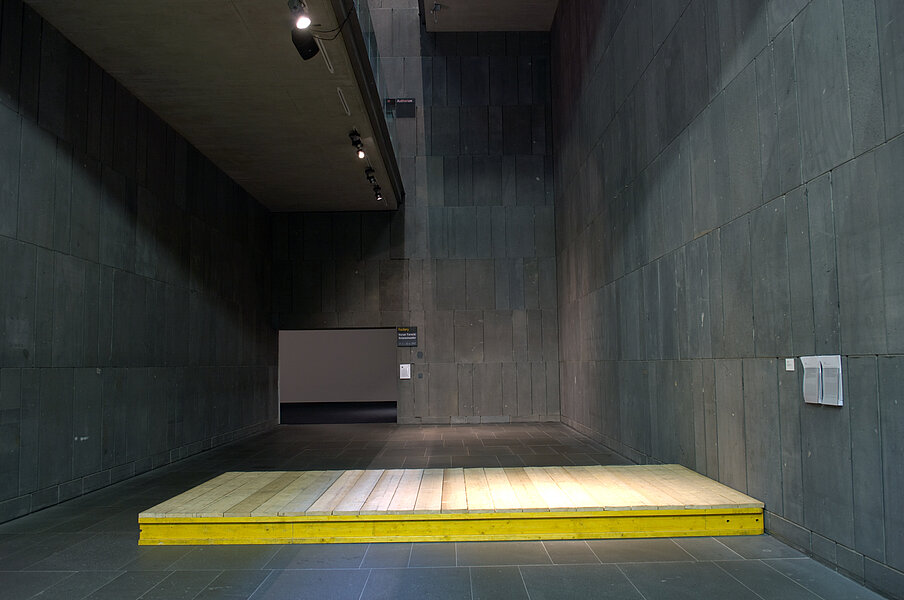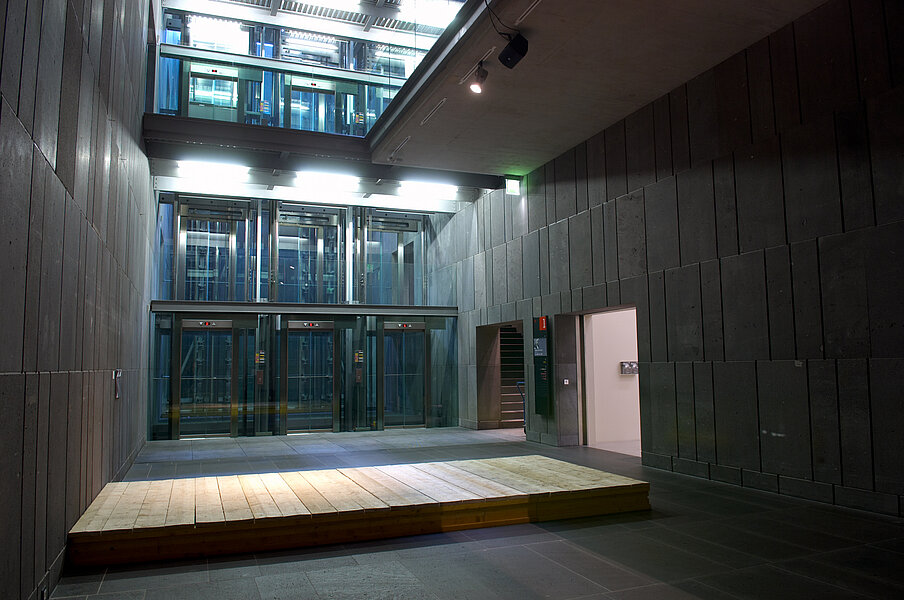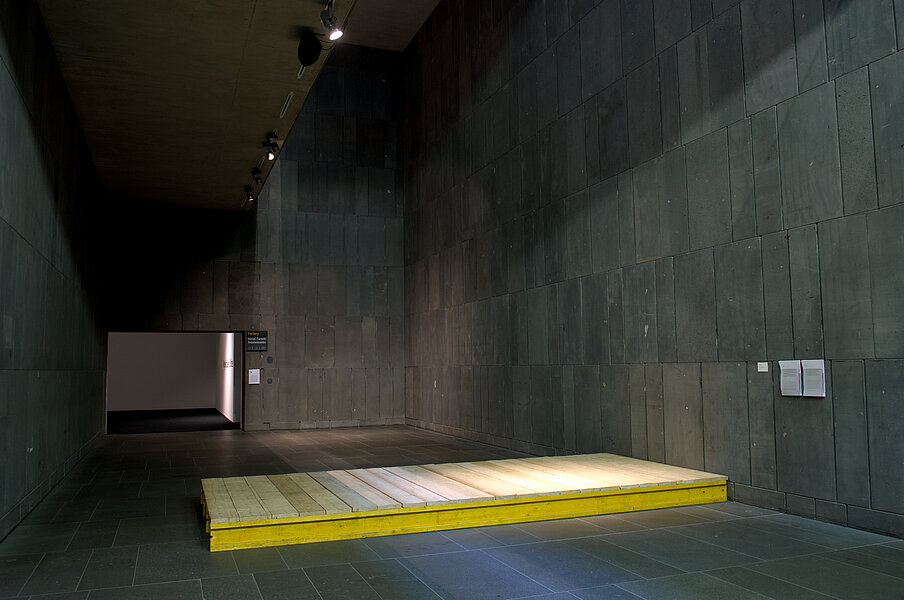
Dertnig, Carola
Equivok
2004
| Object description | Installation composed of architectonic intervention & radio play |
|---|---|
| Object category | Medien-Audio |
| Dimensions |
Objektmaß:
height: 466 cm,
width: 212,5 cm,
depth: 23 cm
|
| Year of acquisition | 2007 |
| Inventory number | AV 177/0 |
| Creditline | mumok - Museum moderner Kunst Stiftung Ludwig Wien, erworben mit Unterstützung der Gesellschaft der Freunde der bildenden Künste |
| Rights reference | Bildrecht, Wien |
| Further information about the person | Dertnig, Carola [GND] |
Based on interviews with eye-witnesses of the so-called "Uni Scandal", the Art and Revolution action organised in 1968 in Lecture Theatre No. 1 at Vienna University, the text illustrates the invention of a new constellation of events. Dertnig has partly left the interviews unchanged, partly paraphrased them and partly supplemented them by new text passages. There thus emerges a narrative that is only modelled on the documentary to the extent that it is part of a fictional configuration. The determinant factor is more who didn't have their say and who was forgotten in the historiography. Who was in the audience, what role did women play, whereabouts were they, how did they feel; what was the affirmation/rejection ratio with regard to the action, how was the action evaluated and classified by the local historiographers in Austria? The wooden floor built into the museum turns the space into a stage. In this way Dertnig on the one hand brings to mind the fact that art history has long conceded the audience more than just the passive role of onlooker. On the other hand, the viewers' scope for action is opened up into changing roles; they can switch from recipient to supernumerary to protagonist. The stage literally becomes a place for action.
© mumok – museum moderner kunst stiftung ludwig wien


